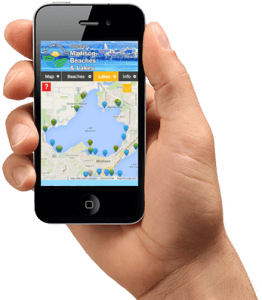The University of Wisconsin-Madison’s Space Science and Engineering Center plays no small role in the implementation of the Lake Mendota research buoy and in the Lake Forecast partnership. The SSEC is instrumental in outfitting and maintaining the buoy as well as working with the data that it generates.
The Space Science and Engineering Center recently wrote a very informative, in-depth article about their work with the buoy, even back to the first buoy deployed in 1959. Our Watershed Engagement Intern, Justin Chenevert, is quoted in the article.
Excerpt:
The [Lake Mendota] buoy is instrumented to take measurements above and below the water’s surface. [Jonathan] Thom explains that above water measurements include wind speed, wind direction, air temperature, and relative humidity. There is also an infrared thermometer trained on the lake to measure the surface-skin temperature: that paper-thin, top layer of water.
There is an elaborate set of instruments below the surface of the water, too. One sensor measures dissolved oxygen, an important indicator of water quality, and a temperature string provides a vertical temperature profile from the surface down to 20 meters, and another sensor measures the amount of dissolved carbon dioxide in the water. Two fluorometers measure phycocyanin and chlorophyll in order to better understand the effects of harmful algal blooms on the ecology of the lake…


